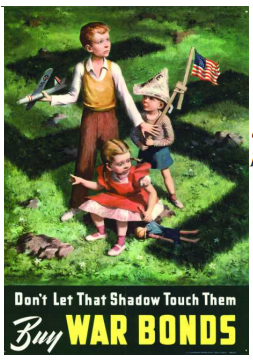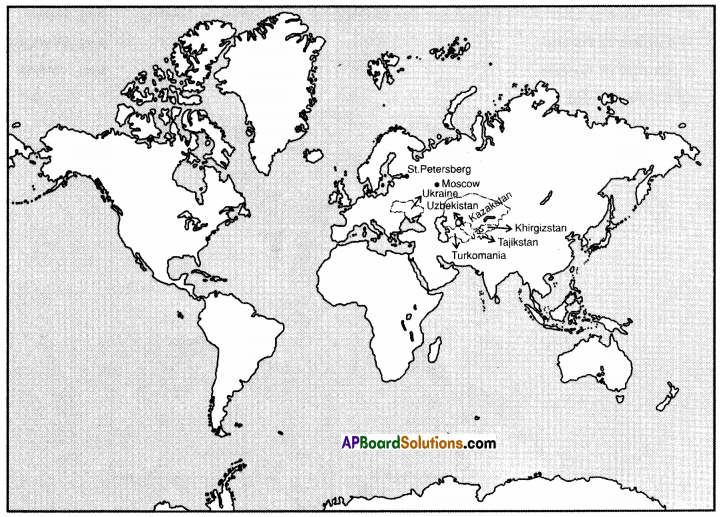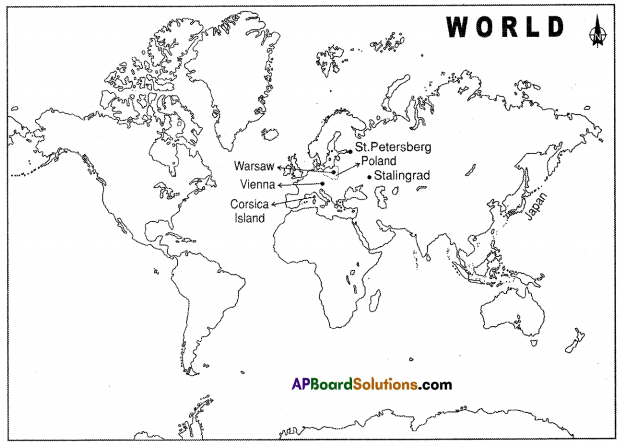SCERT AP 10th Class Social Study Material Pdf 2nd Lesson అభివృద్ధి భావనలు Textbook Questions and Answers.
AP State Syllabus 10th Class Social Solutions 2nd Lesson అభివృద్ధి భావనలు
10th Class Social Studies 2nd Lesson అభివృద్ధి భావనలు Textbook Questions and Answers
Improve your learning (మీ అభ్యసనాన్ని మెరుగుపడుచుకోండి)
ప్రశ్న 1.
వివిధ దేశాలను వర్గీకరించటంలో ప్రపంచ బ్యాంకు ఉపయోగించే ముఖ్యమైన ప్రామాణికాలు ఏమిటి? పై ప్రామాణికాలలో ఏమైనా పరిమితులు ఉంటే వాటిని పేర్కొనండి. (AS1)
జవాబు:
వివిధ దేశాలను వర్గీకరించటంలో ప్రపంచ బ్యాంకు ఉపయోగించే ముఖ్యమైన ప్రామాణికాలు.
- తలసరి ఆదాయం (అమెరికన్ డాలర్లలో) ను ముఖ్య ప్రామాణికంగా తీసుకుంది.
- దేశం మొత్తం ఆదాయాన్ని (జాతీయాదాయం ) దేశ జనాభాతో భాగిస్తే తలసరి ఆదాయం వస్తుంది.
- తలసరి ఆదాయంను ‘సగటు ఆదాయం ” అని కూడా అంటారు.
పరిమితులు:
ఎ) పోలికకు “సగటు” ఉపయోగకరంగా ఉన్నా అది ప్రజల మధ్య అంతరాలను వెల్లడి చేయదు.
బి) ప్రజల మధ్య ఈ ఆదాయం ఎలా పంపిణీ అయిందో తెలియదు.
సి) వాస్తవ అభివృద్ధిని తెలియచేయకపోవచ్చు.
ప్రశ్న 2.
ప్రతి సామాజిక అంశం వెనుక ఒకటి కాక అనేక కారణాలు ఉంటాయి. ఇక్కడ కూడా అది వర్తిస్తుంది. మీ అభిప్రాయంలో హిమాచల్ ప్రదేశ్ లో ఏ ఏ అంశాలు పాఠశాల విద్యకు దోహదం చేశాయి? (AS1)
(లేదా)
హిమాచల్ ప్రదేశ్ లో మెరుగైన అక్షరాస్యతను సాధించడానికి దోహదపడిన అంశాలు ఏవి?
జవాబు:
హిమాచల్ ప్రదేశ్ లో పాఠశాల విద్యకు లేదా మెరుఅక్షరాస్యతకు దోహదం చేసిన అంశాలు.
- పాఠశాలలు తెరిచి చాలా వరకు విద్య ఉచితంగా ఉండేలా లేదా తల్లిదండ్రులకు నామమాత్రపు ఖర్చు అయ్యేలా ప్రభుత్వం చూసింది.
- పాఠశాలలో ఉపాధ్యాయులు, తరగతి గదులు, మరుగుదొడ్లు, త్రాగునీరు వంటి కనీస సదుపాయాలు ఉండేలా చూసింది.
- భారతదేశ రాష్ట్రాలలో ప్రభుత్వ బడ్జెటులో ప్రతి విద్యార్థి చదువుపై ఎక్కువ మొత్తం ఖర్చు పెడుతున్న రాష్ట్రాలలో హిమాచల్ ప్రదేశ్ ఒకటి.
- ఆడపిల్లల పట్ల అంతగా వివక్షత లేకపోవటం అనేది హిమాచల్ ప్రదేశ్ లో చెప్పుకోదగిన విషయం
- కొడుకుల లాగానే కూతుళ్లు కూడా చదువుకోవాలని అక్కడి తల్లిదండ్రులు కోరుకుంటున్నారు.
- లింగ వివక్షత తక్కువగా ఉండటం.
- మహిళా సాధికారిత (మహిళలు బయట ఉద్యోగాలు చేయటం).
- సామాజిక జీవితంలోనూ, గ్రామ రాజకీయాలలోనూ మహిళల పాత్ర ఎక్కువగా ఉండటం.
![]()
ప్రశ్న 3.
అభివృద్ధిని కొలవటానికి ప్రపంచ బ్యాంకు ఉపయోగించే ప్రామాణికాలకూ, ఐక్యరాజ్యసమితి అభివృద్ధి కార్యక్రమం ఉపయోగించే వాటికి తేడా ఏమిటి? (AS1)
జవాబు:
| ప్రపంచ బ్యాంక్ ప్రామాణికాలు | ఐక్యరాజ్యసమితి అభివృద్ధి కార్యక్రమం (UNDP) ప్రామాణికాలు |
| 1) ప్రపంచ బ్యాంక్ తలసరి ఆదాయం (సగటు ఆదాయం ) ను ప్రధాన ప్రామాణికంగా ఉపయోగిస్తుంది. | 1) ఐక్యరాజ్యసమితి అభివృద్ధి కార్యక్రమం (UNDP) తలసరి ఆదాయంతోపాటు విద్యాస్థాయి, ఆయుః ప్రమాణం రేటును ప్రామాణికంగా ఉపయోగిస్తుంది. |
| 2) ప్రపంచ బ్యాంకు అభివృద్ధి వేదికను “ప్రపంచ అభివృద్ధి నివేదిక” గా పిలుస్తారు. | 2) UNDP నివేదికను ‘మానవాభివృద్ధి నివేదిక’ అని పిలుస్తారు. |
| 3) ప్రజల ఆదాయాలను మాత్రమే పరిగణనలోకి తీసుకొంటుంది. జీవిత ప్రమాణ స్థాయిని పరిగణనలోకి తీసుకోదు. | 3) ప్రజల ఆదాయాలతో పాటు జీవన ప్రమాణ స్థాయిని కూడా పరిగణనలోకి తీసుకుంటుంది. |
| 4) ప్రజల సంక్షేమాన్ని దీనిద్వారా తెలుసుకోలేం. | 4) ప్రజల సంక్షేమాన్ని వీని ద్వారా తెలుసుకోగలం. |
| 5) ఇవి ప్రజల మధ్య అంతరాలను వెల్లడి చేయదు. | 5) ఇవి ప్రజల (అభివృద్ధి) మధ్య అంతరాలను తెలియజేస్తుంది. |
| 6) ఇవి పరిమాణాత్మకమైనవి. | 6) ఇవి పరిమాణాత్మకం మరియు గుణాత్మకమైనవి. |
ప్రశ్న 4.
మానవ అభివృద్ధిని కొలవటానికి మీ దృష్టిలో ఇంకా ఏ అంశాలను పరిగణనలోకి తీసుకోవాలి? (AS4)
(లేదా)
మానవాభివృద్ధిని కొలవడానికి ముఖ్యమైన అంశాలను ఉదహరించుము.
జవాబు:
మానవ అభివృద్ధిని కొలవటానికి పరిగణనలోకి తీసుకున్న అంశాలు :
- తలసరి ఆదాయం (కొనుగోలు శక్తి తెలుసుకోవటం కోసం)
- విద్యాస్థాయి
- ఆరోగ్య స్థితి
పరిగణనలోకి తీసుకోవాల్సిన మరికొన్ని అంశాలు :
- సామాజిక న్యాయం
- పంపిణీ న్యాయం
- త్రాగునీటి సౌకర్యాల ఏర్పాటు
- విద్యుత్ సౌకర్యం
- ఉద్యోగిత స్థాయి
- జీవన ప్రమాణ స్థాయి
- పర్యావరణం, పరిశుభ్రత
- అవినీతి రహితం
- సాంకేతిక ప్రగతి
- మెరుగైన రవాణా వ్యవస్థ
ప్రశ్న 5.
‘సగటు’ ఎందుకు ఉపయోగిస్తాం? దీనిని ఉపయోగించటంలో ఏమైనా పరిమితులు ఉన్నాయా? అభివృద్ధికి సంబంధించి మీ సొంత ఉదాహరణను తీసుకుని దీనిని వివరించండి. (AS1)
జవాబు:
- పోలికకు ‘సగటు’ను ఉపయోగిస్తాం.
- జాతీయాదాయం (మొత్తం) కన్నా తలసరి ఆదాయం (సగటు) మెరుగైన సూచిక.
- “సగటు” ను లెక్కించటం సులువు.
పరిమితులు :
- సగటు ప్రజల మధ్య అంతరాలను వెల్లడి చేయదు.
- ఇది పరిమాణాత్మకమైనదే కాని గుణాత్మకమైనది కాదు.
- పంపిణీ ఎలా జరిగిందో తెలియదు.
- వాస్తవ అభివృద్ధి తెలియజేయకపోవచ్చు.
- జీవన ప్రమాణ స్థాయిని ఖచ్చితంగా నిర్వచించలేకపోవచ్చు

- పై ఉదాహరణలో రెండు దేశాల సగటు (20,000) ఒకే విధంగా ఉంది. అయితే,
- రెండు దేశాల అభివృద్ధి స్థాయి ఒకే విధంగా లేదు.
- ‘ఇ’ దేశంలో ఒక వ్యక్తి అత్యంత ధనవంతుడు, మిగతా నలుగురు పేదలు కాని సగటును తీసుకుంటే ఈ విషయం వెల్లడి కాదు. అంటే ఆదాయం ఎలా పంపిణీ అయిందో తెలియదు.
- సగటును తీసుకుంటే ‘ఇ’ దేశంలో వాస్తవ అభివృద్ధి జరిగిందో లేదో తెలియకపోవచ్చు.
- సగటును తీసుకుని ‘ఇ’ దేశంలో వ్యక్తులందరి కొనుగోలు శక్తి ఒకేలా ఉందని అనుకోవచ్చు కాని వాస్తవంలో అది కరెక్ట్ కాకపోవచ్చు.
![]()
ప్రశ్న 6.
హిమాచల్ ప్రదేశ్ లో తలసరి ఆదాయం తక్కువ ఉన్నప్పటికీ పంజాబ్ కంటే మానవ అభివృద్ధి సూచికలో ముందుండటం అన్న వాస్తవం నేపథ్యంలో ఆదాయం యొక్క ప్రాముఖ్యత గురించి ఎటువంటి నిర్ధారణలు చేయవచ్చు? (AS1)
జవాబు:
- పౌరులు ఉపయోగించుకోగల భౌతిక వస్తువులు, సేవలను కేవలం ఆదాయం సూచించలేదు.
- డబ్బు కాలుష్యం లేని వాతావరణాన్ని కొనివ్వలేదు. కలీలేని మందులు దొరుకుతాయన్న హామీ ఇవ్వలేదు.
- ప్రజలందరూ నివారణ చర్యలు చేపడితే తప్పించి అంటురోగాల నుంచి (ఆదాయం) రక్షించలేకపోవచ్చు.
- మానవ అభివృద్ధి సూచికలో దిగువన ఉండటం ప్రజల జీవితాలలోని కొన్ని అంశాలపై దృష్టి కేంద్రీకరించాలన్న సంకేతాన్ని ఇస్తోంది.
- ప్రభుత్వమూ, ప్రజలూ అభివృద్ధి (మానవ వనరులు) పై ఆసక్తి కలిగి ఉంటే ఆదాయం (తలసరి) అంత ప్రాముఖ్య అంశం కాకపోయినప్పటికీ, అవసరమైన మేర ఉండాలి.
ఉదా : హెచ్.పి. ప్రభుత్వం విద్యపై సగటున 2,005 రూపాయలు ఖర్చు పెడుతోంది, ఇది భారతదేశ సగటు (1049) కన్నా ఎక్కువ. - తలసరి ఆదాయ అభివృద్ధి కన్నా, మానవ వనరుల అభివృద్ధికి అధిక ప్రాధాన్యత ఇవ్వడం వలన హిమాచల్ ప్రదేశ్ లో ఇది (HDI లో ముందుండటం) సాధ్యమయ్యింది.
- సామాజిక అంశాలు (లింగ వివక్షత, పురుషాధిక్యత మొదలయినవి) మానవ వనరుల అభివృద్ధిలో ఆదాయం కన్నా ముఖ్యపాత్ర పోషిస్తాయి.
ఉదా : లింగ వివక్షత లేకపోవడం వలన హిమాచల్ ప్రదేశ్ లో బాలికలు అందరూ చదువుకోవడం జరుగుతుంది. - మహిళా సాధికారత మానవాభివృద్ధిలో ప్రముఖ అంశంగా తోడ్పడుతుంది.
ఉదా : హిమాచల్ ప్రదేశ్ లో సామాజిక జీవితంలో, గ్రామ రాజకీయాలలోను మహిళల పాత్ర ఎక్కువ. అలాగే పలు గ్రామాలలో చురుకుగా పనిచేస్తున్న మహిళా మండలులు ఉన్నాయి.
ప్రశ్న 7.
పట్టిక : హిమాచల్ ప్రదేశ్ లో ప్రగతి

పై పట్టికలో ఉన్న వివరాల ఆధారంగా కింది వాటిని పూరించండి : (AS3)
ఆరు సంవత్సరాలు పైబడిన ప్రతి 100 మంది ఆడపిల్లల్లో హిమాచల్ ప్రదేశ్ లో 1993లో ….. ఆడపిల్లలు ప్రాథమిక స్థాయి దాటి చదివారు. 2006 నాటికి ఇది వందలో ………… మందికి చేరుకుంది. భారతదేశం మొత్తం మీద 2006లో ప్రాథమిక స్థాయి దాటి చదివిన మగపిల్లల సంఖ్య వందలో …….. మాత్రమే.
జవాబు:
ఆరు సంవత్సరాలు పైబడిన ప్రతి 100 మంది ఆడపిల్లల్లో హిమాచల్ ప్రదేశ్ లో 1993లో …. 39 మంది…. ఆడపిల్లలు ప్రాథమిక స్థాయి దాటి చదివారు. 2006 నాటికి ఇది వందలో …60 ….. మందికి చేరుకుంది. భారతదేశం మొత్తం మీద 2006లో ప్రాథమిక స్థాయి దాటి చదివిన మగపిల్లల సంఖ్య వందలో … 57….. మాత్రమే.
ప్రశ్న 8.
హిమాచల్ ప్రదేశ్ లో తలసరి ఆదాయం ఎంత? అధిక ఆదాయం ఉన్నప్పుడు పిల్లల్ని బడికి పంపటం తల్లిదండ్రులకు తేలిక అవుతుందా? చర్చించండి. హిమాచల్ ప్రదేశ్ లో ప్రభుత్వం పాఠశాలలు నడపటం ఎందుకు అవసరమయ్యింది? (AS1)
జవాబు:
ఎ) హిమాచల్ ప్రదేశ్ తలసరి ఆదాయం (2012 సం||లో) 74,000 రూపాయలు.
బి)
- అధిక ఆదాయం ఉన్నప్పుడు పిల్లల్ని బడికి పంపటం తల్లిదండ్రులకూ ఖచ్చితంగా తేలిక అవుతుంది. అయితే తలసరి ఆదాయం అధికంగా ఉన్నప్పుడు ఈ విషయాన్ని ఖచ్చితంగా చెప్పలేం. ఎందుకంటే ఆదాయ పంపిణీ ఎలా జరిగిందో చెప్పలేం కనుక.
- తక్కువ ఆదాయం కలిగి ఉన్న తల్లిదండ్రులు విద్యపై డబ్బు ఖర్చు పెట్టడం కష్టం. అలాగే పిల్లలను కూడా చదువు మాన్పించి కూలీకి (బాలకార్మికులుగా) పంపటం జరుగుతుంది.
- అధిక ఆదాయం ఉన్న తల్లిదండ్రులకు ఆ అవసరం ఉండదు కనుక పిల్లలను చక్కగా చదివిస్తారు.
సి) హిమాచల్ ప్రదేశ్ లో ప్రభుత్వం పాఠశాలలు నడపటం ఎందుకు అవసరమయ్యిందంటే.
- భారతదేశానికి స్వాతంత్ర్యం వచ్చినపుడు హిమాచల్ ప్రదేశ్ లో విద్యాస్థాయి తక్కువగా ఉండటం.
- కొండ ప్రాంతం కావటంతో జనసాంద్రత చాలా తక్కువ. పాఠశాల విస్తరణ, ప్రత్యేకించి గ్రామీణ ప్రాంతాలలో విస్తరించటం పెద్ద సవాలుగా ఉండింది.
- చాలావరకు విద్య ఉచితంగా లేదా తల్లిదండ్రులకు నామమాత్రపు ఖర్చు అయ్యేలా ప్రభుత్వం చూసింది.
- అక్కడి ప్రజలు విద్యపై ఎంతో ఆసక్తి చూపడం వలన.
- విద్యకు అత్యధిక ప్రాధాన్యతను ఇవ్వడం వలన.
ప్రశ్న 9.
అబ్బాయిలతో పోలిస్తే అమ్మాయిల చదువుకు తల్లిదండ్రులు తక్కువ ప్రాధాన్యత ఎందుకు ఇస్తారు? తరగతిలో చర్చించండి. (AS4)
జవాబు:
అబ్బాయిలతో పోలిస్తే అమ్మాయిల చదువుకు తల్లిదండ్రులు తక్కువ ప్రాధాన్యత ఇస్తున్నారు.
కారణాలు :
- అమ్మాయిల చదువుకు తక్కువ ప్రాధాన్యత ఇవ్వటానికి ప్రధాన కారణం “లింగ వివక్షత”.
- “బాల్య వివాహాలు” (అమ్మాయిలకు తొందరగా పెళ్ళి చేసి పంపించేయాలని భావించటం),
- అమ్మాయిలను అబ్బాయిలకంటే తక్కువగా చూస్తూ వారిని ఇంటిపని, వంట పనులకు బాధ్యుల్ని చేయటం, చిన్నపిల్లల సంరక్షణను అప్పగించటం.
- అమ్మాయి ఎక్కువగా చదువుకుంటే తగిన పెళ్ళి సంబంధం కుదర్చాలంటే ఎక్కువ ఖర్చు మరియు కష్టంతో కూడుకున్నదని పెద్దలు అభిప్రాయపడటం.
- ఉద్యోగం పురుషలక్షణం అంటూ, అమ్మాయి చదివి ఏం ఉద్యోగం చేయాలని అంటూ అమ్మాయిల విద్యను నిరుత్సాహపరచటం. (ఒక విధమైన ‘పురుషాధిక్యత’)
- మనది “పితృస్వామ్య కుటుంబా”లవ్వటం వలన అబ్బాయిలకు ప్రాధాన్యత ఎక్కువగా ఉంటుంది.
- అమ్మాయిలను “సరైన భద్రత” లేకుండా బయటకు (పాఠశాలలు మొ||నవి) పంపటం శ్రేయస్కరం కాదని భావించడం. సరైన సౌకర్యాలు (రవాణా, మరుగుదొడ్లు మొ||నవి) అందుబాటులో లేకపోవటం.
- మగపిల్లల చదువు (ఖర్చును) పెట్టుబడిగా, బాలికల చదువు (ఖర్చు) ఖర్చుగాను భావించడం. అబ్బాయిలకయ్యే ఖర్చును ఇతరత్రా రూపంలో తిరిగి పొందవచ్చని భావించడం.
- కొన్ని సామాజిక దురాచారాలు, పురుషాధిక్య సమాజం, మహిళా సాధికారత లోపించడం వలన అమ్మాయిల చదువుకు తక్కువ ప్రాధాన్యత ఇస్తున్నారు.
![]()
ప్రశ్న 10.
ఆడవాళ్ళు ఇంటిబయట పనిచెయ్యటానికి, లింగ వివక్షతకూ మధ్య గల సంబంధం ఏమిటి? (AS1)
జవాబు:
ఆడవాళ్ళు ఇంటిబయట పనిచెయ్యటానికి, లింగ వివక్షతకూ విలోమ (వ్యతిరేక) సంబంధం ఉంది.
- బయట ఉద్యోగాలు చేసే మహిళలు స్వతంత్రంగా ఉంటారు, ఆత్మవిశ్వాసం కనబరుస్తారు.
- ఇంటిలో తీసుకునే నిర్ణయాలలో అంటే పిల్లల చదువు, ఆరోగ్యం, పిల్లల సంఖ్య, గృహ నిర్వహణ వంటి వాటిల్లో ఆడవాళ్ళ మాటకు ప్రాధాన్యత ఉంటుంది.
- ఉద్యోగాల్లో ఉన్న మహిళలు పెళ్ళి అయిన తరువాత తమ కూతుళ్లు ఉద్యోగాలు చేయాలని తల్లులు కోరుకుంటారు, కాబట్టి చదువుకు ప్రాధాన్యత ఇవ్వటం సహజం.
- ఆడవాళ్లు ఉద్యోగం (బయటపని) చేయటం వలన ఆర్థిక స్వాతంత్ర్యం పొందుతారు, అలాగే ఆర్థికంగా స్థిరత్వం పొందుతారు. తద్వారా మహిళా సాధికారత పొందుతారు.
- మహిళలు సాధికారత సాధించిన తర్వాత లింగ వివక్షతకు అసలు చోటే ఉండదు. (పూర్తి అనాగరిక సమాజాలలో తప్ప) ఈ విషయాన్ని మనం అభివృద్ధి చెందిన దేశాలలో చూస్తున్నాం కూడా !
ప్రశ్న 11.
ఎనిమిదవ తరగతి పాఠ్యపుస్తకంలో మీరు విద్యాహక్కు చట్టం (వి.హ.చ) గురించి చదివారు. 6-14 సంవత్సరాల బాలలకు ఉచిత విద్యకు హక్కు ఉందని ఈ చట్టం పేర్కొంటోంది. పరిసర ప్రాంతాలలో తగినన్ని పాఠశాలలు నిర్మించేలా, అర్హులైన టీచర్లను నియమించేలా, అవసరమైన సదుపాయాలు కల్పించేలా ప్రభుత్వం చూడాలి. మీరు ఈ అధ్యాయంలో చదివినది, మీకు తెలిసిన దాన్నిబట్టి (1) బాలలకు (II) మానవ అభివృద్ధికి ఈ చట్టం ఎలాంటి ప్రాధాన్యత కలిగి ఉందో చర్చించండి, గోష్టి నిర్వహించండి. (AS2)
జవాబు:
(i) విద్యాహక్కు చట్టం – బాలలకు కలిగి ఉన్న ప్రాధాన్యత.
- దీని ప్రకారం 6 నుండి 14 సం|| మధ్య వయస్సు గల పిల్లలందరికీ ఉచిత, నిర్బంధ విద్యను ప్రభుత్వం అందిస్తుంది.
- పిల్లల పరిసరాలలోనే తగిన సంఖ్యలో కనీస సౌకర్యాలు కలిగిన పాఠశాలలు నిర్మించడం, తగినంతమంది ఉపాధ్యాయుల నియామకం చేయడం జరుగుతుంది.
- పిల్లలకు భయం, ఆందోళన లేకుండా (శారీరక, మానసిక హింసలేకుండా) కృత్యాల ద్వారా బోధన ద్వారా పిల్లల సర్వతోముఖాభివృద్ధికి కృషి చేస్తుంది.
- బాలల హక్కులు (అభివృద్ధి, భూస్వామ్య హక్కు మొ॥నవి) కాపాడబడటానికి ఈ చట్టం ఎంతో అవసరం.
- బాలకార్మిక వ్యవస్థ, వెట్టిచాకిరి, బాల్య వివాహాలు మొ||న సామాజిక దురాచారాల నుండి (బాలలను) విముక్తి కల్పిస్తుంది.
(II) మానవ అభివృద్ధికి ప్రాధాన్యత :
- మానవాభివృద్ధి సూచికలో ‘విద్యాస్థాయి’ ప్రధానమైన సూచిక. విద్యాస్థాయిని పెంపొందించటానికి ఈ విద్యాహక్కు చట్టం ఎంతో ఉపయోగపడుతుంది.
- సగటున బడిలో గడిపే సంవత్సరాలు ఈ చట్టం ద్వారా ఖచ్చితంగా పెరుగుతాయి.
- అలాగే పాఠశాల విద్యలో ఉండే సంవత్సరాలు, ప్రాథమిక, మాధ్యమిక, ఉన్నత విద్యలో నమోదు నిష్పత్తి కూడా ఈ చట్టం ద్వారా గణనీయంగా పెరుగుతుంది.
- ఈ చట్టం ద్వారా విద్యాభివృద్ధి తద్వారా మానవాభివృద్ధి ఆశించిన రీతిలో జరుగుతుంది.
- విద్యాభివృద్ధి అనేది ఆదర్శవంతమైన (మానవాభివృద్ధి) సూచిక.
10th Class Social Studies 2nd Lesson అభివృద్ధి భావనలు InText Questions and Answers
10th Class Social Textbook Page No.20
ప్రశ్న 1.
ప్రపంచ అభివృద్ధి నివేదిక 2012 ప్రకారం మధ్య ఆదాయ దేశాల తలసరి ఆదాయం ఎంతో పైన ఉన్న భాగం చదివి చెప్పండి.
జవాబు:
ప్రపంచ అభివృద్ధి నివేదిక 2012 ప్రకారం మధ్య ఆదాయ దేశాల తలసరి ఆదాయం 1,035 అమెరికన్ డాలర్ల కంటే ఎక్కువ, 12,600 అమెరికన్ డాలర్ల కంటే తక్కువ.
10th Class Social Textbook Page No.14 & 15
ప్రశ్న 2.
పట్టిక : వివిధ వర్గాల ప్రజలు, అభివృద్ధి లక్ష్యాలు
| వివిధ వర్గాల ప్రజలు | అభివృద్ధి లక్ష్యాలు/ఆకాంక్షలు |
| 1) భూమిలేని గ్రామీణ కార్మికులు | మరిన్ని రోజుల పని, మెరుగైన కూలీ; స్థానిక పాఠశాల తమ పిల్లలకు నాణ్యమైన విద్యను అందించగలగటం; సామాజిక వివక్షత లేకపోవటం, వాళ్లు కూడా గ్రామంలో నాయకులు కాగలగటం. |
| 2) ధనిక రైతులు | తమ పంటలకు అధిక మద్దతు ధరల ద్వారా, తక్కువ కూలీకి బాగా కష్టపడే కూలీల ద్వారా అధిక ఆదాయాన్ని ఖచ్చితంగా పొందగలగటం; తమ పిల్లలు విదేశాలలో స్థిరపడగలగటం. |
| 3) వర్షాధార రైతులు | |
| 4) భూమి ఉన్న కుటుంబంలోని గ్రామీణ మహిళ | |
| 5) పట్టణ ప్రాంతంలోని నిరుద్యోగ యువత | |
| 6) పట్టణ ప్రాంతంలోని ధనిక అబ్బాయి | |
| 7) పట్టణ ప్రాంతంలోని ధనిక కుటుంబానికి చెందిన అమ్మాయి | తన సోదరుడికి లభించే స్వేచ్చ తనకీ కావాలి, తన జీవితంలో ఏం చేయాలో తాను నిర్ణయించుకోగలగాలి. విదేశాలలో పై చదువులు చదువుకోవాలి. |
| 8) గనుల తవ్వకం ప్రాంతంలోని ఆదివాసి | |
| 9) తీరప్రాంతంలో చేపలు పట్టే వ్యక్తి |
జవాబు:
పట్టిక : వివిధ వర్గాల ప్రజలు, అభివృద్ధి లక్ష్యాలు వివిధ వర్గాల ప్రజలు
| వివిధ వర్గాల ప్రజలు | అభివృద్ధి లక్ష్యాలు/ఆకాంక్షలు |
| 1) భూమిలేని గ్రామీణ కార్మికులు | మరిన్ని రోజుల పని, మెరుగైన కూలీ; స్థానిక పాఠశాల తమ పిల్లలకు నాణ్యమైన విద్యను అందించగలగటం; సామాజిక వివక్షత లేకపోవటం, వాళ్లు కూడా గ్రామంలో నాయకులు కాగలగటం. |
| 2) ధనిక రైతులు | తమ పంటలకు అధిక మద్దతు ధరల ద్వారా, తక్కువ కూలీకి బాగా కష్టపడే కూలీల ద్వారా అధిక ఆదాయాన్ని ఖచ్చితంగా పొందగలగటం; తమ పిల్లలు విదేశాలలో స్థిరపడగలగటం. |
| 3) వర్షాధార రైతులు | సకాలంలో రుతుపవనాలు వచ్చి వర్షాలు బాగా పడాలి. పొలాలకు సాగునీరు అందాలి. పంట దిగుబడి పెరగాలి. ఆ పంటకు మంచి గిట్టుబాటు ధర రావాలి. పిల్లలకు మంచి విద్యనందించటం. |
| 4) భూమి ఉన్న కుటుంబంలోని గ్రామీణ మహిళ | పంట దిగుబడి పెరగాలి. పంటకు మంచి ధర రావాలి. నలుగురిలో (ఊరిలో) దర్పంగా ఉండాలి. మంచి బంగారు నగలు కొనుక్కోవాలి. ఇంట్లోవారు తన మాట వినాలి. పిల్లలకు ఉన్నతమైన సంబంధాలు తేవాలి. |
| 5) పట్టణ ప్రాంతంలోని నిరుద్యోగ యువత | చిన్నదో, పెద్దదో ఒక మంచి స్థిరమైన ఉద్యోగం (ప్రభుత్వ ఉద్యోగం) పొందాలి. స్థిరమైన ఆదాయం వచ్చే స్వయం ఉపాధిని వెతుక్కోవాలి. ప్రభుత్వ ఉద్యోగాల నోటిఫికేషన్స్ సకాలంలో వెలువడాలి, వాటికి ప్రిపేరయ్యి ఉద్యోగం సాధించాలి. |
| 6) పట్టణ ప్రాంతంలోని ధనిక అబ్బాయి | విదేశాలలో చదువుకోవాలి, ఉద్యోగం పొందాలి. స్వేచ్ఛావాతావరణంలో విహరించాలి. తండ్రి వ్యాపారం చేయటం ఇప్పుడే ఇష్టం లేదు, లేదా తండ్రి వ్యాపారాన్ని అభివృద్ధి చెయ్యాలి. కొత్త మోడల్ కారు, బైక్ కొనుక్కోవాలి. |
| 7) పట్టణ ప్రాంతంలోని ధనిక కుటుంబానికి చెందిన అమ్మాయి | తన సోదరుడికి లభించే స్వేచ్ఛ తనకీ కావాలి. తన జీవితంలో ఏం చేయాలో తాను నిర్ణయించుకోగలగాలి. విదేశాలలో పై చదువులు చదువుకోవాలి. |
| 8) గనుల తవ్వకం ప్రాంతంలోని ఆదివాసి | తమ భూములు తమకిచ్చేయాలి. ప్రమాదానికి గురికాకుండా రోజు గడవాలి. పర్యావరణాన్ని ఎలాగైనా కాపాడుకోవాలి. ప్రభుత్వం నిర్ణయం మార్చుకుంటే బాగుండు, మార్చే శక్తి తమకుంటే బాగుండు. |
| 9) తీరప్రాంతంలో చేపలు పట్టే వ్యక్తి | వేట బాగా జరిగి ఎక్కువ చేపలు దొరకాలి. ఎటువంటి అంతరాయం, ప్రమాదం జరగకుండా క్షేమంగా ఇంటికి చేరాలి. చేపలకు మంచి ధర రావాలి. మంచి మర పడవ కొనుక్కోవాలి. |
![]()
10th Class Social Textbook Page No.16 & 17
ప్రశ్న 3.
క్రింద ఇచ్చిన వార్తాపత్రిక కథనం చూడండి.
“ఒక ఓడ 500 టన్నుల విషపూరిత వ్యర్థ ద్రవ పదార్థాలను చెత్త పడవేసే బహిరంగ ప్రదేశంలోనూ, పక్కన ఉన్న సముద్రంలోనూ పారబోసింది. ఆఫ్రికాలోని ఐవరీకోస్ట్ దేశంలోని అబిద్ జాన్ అనే పట్టణంలో ఇది జరిగింది. అత్యంత విషపూరితమైన ఈ వ్యర్థ పదార్థాల నుండి వెలువడిన వాయువుల వల్ల తల తిప్పటం, చర్మంపై దద్దురులు, స్పృహతప్పి పడిపోవటం, విరోచనాలు వంటి సమస్యలు ఏర్పడ్డాయి. ఒక నెల రోజులలో ఏడుగురు చనిపోయారు. ఇరవై మంది ఆసుపత్రిలో ఉన్నారు. విష ప్రభావానికి గురైన లక్షణాలకు 26,000 మంచి చికిత్స పొందారు. లోహాలు, ముడి చమురులతో వ్యాపారం చేసే ఒక బహుళజాతి కంపెనీ తన ఓడలోని వ్యర్థ పదార్థాలను పడవెయ్యటానికి ఐవరీకోస్టు చెందిన ఒక స్థానిక కంపెనీతో కాంట్రాక్టు కుదుర్చుకుంది.” (ది హిందూ పత్రికలో 2006 సెప్టెంబరు 16న వైజు నరవనె రాసిన వార్త ఆధారంగా)
ఎ) దీనివల్ల ప్రయోజనం పొందినవాళ్లు ఎవరు, పొందని వాళ్లు ఎవరు?
జవాబు:
- దీనివల్ల (కుడంకుళం అణు విద్యుత్ కేంద్రం) ప్రయోజనం పొందినవాళ్లు భారతదేశ ప్రజలు అందరూ. దీని ప్రధాన ఉద్దేశం నిరంతరం పెరుగుతున్న దేశ విద్యుచ్ఛక్తి అవసరాలు తీర్చడం.
- ఈ ప్రాంతం ప్రజలు, మత్స్యకారులు వారి భద్రత, రక్షణ, జీవనోపాధులు దెబ్బతింటాయని దీనివల్ల తమకు ప్రయోజనం ఉండదని భావించారు.
- రెండో ఉదాహరణలో బహుళ జాతి కంపెనీ లాభం పొందింది, ఐవరీకోస్ట్ తీరప్రాంత ప్రజలు నష్టపోయారు.
బి) ఈ దేశానికి అభివృద్ధి లక్ష్యాలు ఎలా ఉండాలి?
జవాబు:
ఈ దేశానికి అభివృద్ధి లక్ష్యాలు ఎలా ఉండాలి అంటే –
- అవసాపనా సౌకర్యాల (రోడు, రవాణా, విద్యుత్, నీరు మొ||నవి) లోటు లేకుండా ఏర్పాటు చేయడం.
- ఆధునిక సమాచార, సాంకేతిక రంగాలలో స్వయం సమృద్ధి సాధించుట.
- దేశ అభివృద్ధి లక్ష్యాలు ప్రజలందరి అభివృద్ధికి, అభ్యున్నతికి కృషి చేసేవిలా, దేశం స్వయం సమృద్ధి సాధించేలా, సుస్థిరమైన అభివృద్ధి సాధించేలా ఉండాలి.
సి) మీ గ్రామానికి, పట్టణానికి లేదా ప్రాంతానికి కొన్ని అభివృద్ధి లక్ష్యాలను పేర్కొనంది.
జవాబు:
మా గ్రామానికి / పట్టణానికి / ప్రాంతానికి కొన్ని అభివృద్ధి లక్ష్యాలు :
- రక్షిత మంచినీటి సౌకర్యం (అందరికి) కల్పించటం.
- విద్యా సౌకర్యాలు ఏర్పాటు చేయటం.
- పర్యావరణం, పరిశుభ్రతను కాపాడటం.
- వైద్య, ఆరోగ్య సదుపాయాలు కల్పించటం.
- మెరుగైన (రోడ్లు) రవాణా సౌకర్యాలను కల్పించటం.
- 100%, విద్యుదీకరణ, కోతలు లేని విద్యుత్ సౌకర్యం ఏర్పాటు.
- వ్యవసాయ కూలీలకు, ఇతర నిరుద్యోగులకు సంవత్సరమంతా ఉపాధి కల్పించే ప్రణాళికలు చేయడం.
- వ్యవసాయంతో పాటు పారిశ్రామికంగా అభివృద్ధి చేయటం.
డి) ప్రభుత్వానికి, అణువిద్యుత్ కేంద్ర ప్రాంతాలలో నివసించే ప్రజలకు మధ్య గల వివాదాలేవి?
జవాబు:
- భారత ప్రభుత్వం అణువిద్యుత్ కేంద్రాన్ని పెరుగుతున్న దేశ విద్యుచ్ఛక్తి అవసరాలు తీర్చు ప్రధాన ఉద్దేశముతో స్థాపించింది.
- కాని ఆ ప్రాంత ప్రజలు వారి భద్రత, రక్షణ, జీవనోపాధుల పరిరక్షణ కోసం ఉద్యమించారు.
- పెరుగుతున్న విద్యుచ్ఛక్తి అవసరాలు తీరాలంటే అణువిద్యుత్ శక్తి ఉత్పత్తి తప్పనిసరి అని ప్రభుత్వం భావిస్తోంది.
- కాని ఆ ప్రాంత ప్రజలు తీరప్రాంతం, దేశం రేడియోధార్మిక వినాశక ప్రమాదం నుండి రక్షించబడాలని కోరుకుంటు ఉద్యమిస్తున్నారు.
- ఆ ప్రాంత ప్రజలు ప్రత్యామ్నాయ ఇంధన వనరుల (సౌర విద్యుచ్ఛక్తి, పవన విద్యుచ్ఛక్తి మొ||నవి) గురించి ఆలోచించమంటూ, ప్రాజెక్ట్ నిర్మాణాన్ని ఆపాలంటున్నారు.
- ప్రభుత్వం ప్రాజెక్ట్ నిర్మాణానికి తగిన భద్రతా చర్యలన్నీ తీసుకుంటున్నామని ప్రకటించి, ఉద్యమాలకు అతీతంగా నిర్మాణం కొనసాగిస్తోంది.
ఇ) ఇటువంటి అభివృది విధానాలకు చెందిన వివాదాలు మీకేమైనా తెలుసా? ఇరుపక్షాల వాదనలు పేర్కొనండి.
జవాబు:
- పశ్చిమగోదావరి జిల్లా (ఆంధ్రప్రదేశ్) లో గోదావరి నదిపై నిర్మిస్తున్న బహుళార్థ సాధక ప్రాజెక్ట్ పై అనేక వివాదాలు ఉన్నాయి.
- ఈ ప్రాజెక్ట్ నిర్మాణం పూర్తయితే అనేక లక్షల ఎకరాలకు సాగునీరు అందుతుంది, అలాగే జలవిద్యుచ్ఛక్తి కూడా ఉత్పత్తవుతుంది.
- అయితే ఈ ప్రాజెక్ట్ నిర్మాణం వలన అనేక గ్రామాలు ముంపునకు గురవుతాయి. పెద్ద మొత్తంలో అటవీ ప్రాంతం మునిగిపోతుంది, పర్యావరణం దెబ్బతింటుందని అక్కడి ప్రజలు పెద్ద ఎత్తున నిరసన తెలుపుతున్నారు.
- మరో ఉదాహరణ నర్మదానదిపై నిర్మించతలపెట్టిన (సర్దార్ సరోవర్) ప్రాజెక్ట్ విషయంలో కూడా ఇలాంటి వివాదాలే తలెత్తితే, మేధాపాట్కర్ నాయకత్వాన ‘నర్మదా బచావో’ ఆందోళన సాగిస్తున్నారు.
10th Class Social Textbook Page No.19
ప్రశ్న 4.
ఉదాహరణకు క, గ అనే రెండు దేశాలను తీసుకుందాం. సంక్లిష్టంగా లేకుండా ఉండటానికి రెండు దేశాలలోనూ అయిదుగురే ప్రజలు ఉన్నారనుకుందాం. పట్టికలో ఇచ్చిన వివరాల ఆధారంగా రెండు దేశాల సగటు ఆదాయాన్ని లెక్కగట్టండి.
పట్టిక : రెండు దేశాలను పోల్చటం

జవాబు:
ఎ) దేశం ‘క’ సగటు ఆదాయం = 10000
బి) దేశం ‘గ’ సగటు ఆదాయం = 10000
10th Class Social Textbook Page No.20
ప్రశ్న 5.
ఇక్కడ ఇచ్చిన ఉదాహరణ కాకుండా పోలికకు సగటును ఉపయోగించే మరో మూడు ఉదాహరణలు ఇవ్వండి.
జవాబు:
- ఒక పరిశ్రమలోని ఉత్పత్తి, ఉద్యోగులు (ధరలు, వ్యయం) అనుసరించి సగటు ఉత్పత్తి, సగటు వ్యయం మొదలైనవి ఉపయోగించి పోలుస్తారు.
- తరగతిలోని వివిధ మార్కుల సగటు. .
ఉదా : తరగతి మార్కుల సగటు, సబ్జెక్ట్ మార్కుల సగటు, జి.పి.ఎ. (గ్రేడ్ పాయింట్ సగటు) - జనాభాను పోల్చుటకు “సగటు జనసాంద్రత” (ఒక చదరపు కిలోమీటరులో నివసించే జనాభా) ను ఉపయోగిస్తున్నారు.
![]()
10th Class Social Textbook Page No.18
ప్రశ్న 6.
విభిన్న వ్యక్తులకు అభివృది పట్ల విభిన్న భావనలు ఎందుకుంటాయి? కింద ఇచ్చిన వివరణల్లో ఏది ముఖ్యమైనది, ఎందుకు?
(అ) వ్యక్తులు వేరు కాబట్టి
(ఆ) వ్యక్తుల జీవన పరిస్థితులు వేరు కాబట్టి
(లేదా)
వివిధ వర్గాల ప్రజల అభివృద్ధి లక్ష్యాలు భిన్నంగా ఉంటాయనడానికి ఉదాహరణలివ్వండి.

జవాబు:
- విభిన్న వ్యక్తులకు అభివృద్ధి పట్ల విభిన్న భావనలు ఎందుకుంటాయంటే వ్యక్తుల జీవన పరిస్తితులు వేరు కాబట్టి.
- వ్యక్తులు వారి వారి పరిస్థితులను బట్టి వారి అభివృద్ధి లక్ష్యాలు, ఆకాంక్షలు కలిగి ఉంటారు.
- ఇద్దరు వ్యక్తులకు లేదా బృందాలకు పరస్పర విరుద్ధమైన కోరికలు ఉండవచ్చు.
- వ్యక్తులు తామున్న జీవన పరిస్థితుల్లో వివిధ కోరికలు లక్ష్యాలు/ఆకాంక్షలు కలిగి ఉంటారు. ఇవి వారి జీవన పరిస్థితులకు అనుగుణంగానే ఉంటాయి.
- ఒకరికి అభివృద్ధి అయినది మరొకరికి అభివృద్ధి కాకపోవచ్చు, అది విధ్వంసం కూడా కావచ్చు.
10th Class Social Textbook Page No.18
ప్రశ్న 7.
కింది రెండు వాక్యాల అర్థం ఒకటేనా ? మీ సమాధానాన్ని ఎలా సమర్థించుకుంటారు?
(అ) ప్రజల అభివృద్ధి లక్ష్యాలు వేరు వేరుగా ఉంటాయి.
(ఆ) ప్రజల అభివృద్ధి లక్ష్యాలు పరస్పర విరుద్ధంగా ఉంటాయి.
జవాబు:
- రెండు వాక్యాల అర్థం ఒకటి కాదు, వేరు వేరు.
- ప్రజల అభివృద్ధి లక్ష్యాలు వేరువేరుగా ఉంటాయి అంతేకాని పరస్పర విరుద్ధంగా ఉండాలని లేదు.
- కొన్ని సందర్భాలలో ఒకరికి అభివృద్ధి అనుకున్నది మరొకరికి (కాకపోవచ్చు) విధ్వంసం కావచ్చు కాని అన్ని సందర్భాలలో కాదు.
ఉదా : విద్యుత్ కోసం పారిశ్రామికవేత్తలు మరిన్ని ఆనకట్టలు కోరుకోవచ్చు. కాని ముంపునకు గురయ్యే నిర్వాసితులు ఆనకట్టలకు బదులు చెక్ డ్యాములు కోరుకోవచ్చు. కాని ప్రజలందరూ ఇలా కోరుకోటం లేదు కదా ! - ఒక అమ్మాయి తన సోదరుడికి లభించే స్వేచ్చ తనకూ కావాలని ఆశించవచ్చు. ఈ కోరిక సోదరుడి కోరికకు విరుద్ధం కాదు కదా !
10th Class Social Textbook Page No.18
ప్రశ్న 8.
మన జీవితంలో ఆదాయం కంటే ముఖ్యమైన ఇతర అంశాలకు కొన్ని ఉదాహరణలు ఇవ్వండి.
జవాబు:
మన జీవితంలో ఆదాయం కంటే ముఖ్యమైన అంశాలు చాలానే ఉన్నాయి.
- డబ్బు లేదా అది కొనగలిగిన వస్తువులు మన జీవితంలో ఒక అంశం మాత్రమే.
- భౌతికం కాని అంశాలపైన జీవన నాణ్యత ఆధారపడి ఉంటుంది.
- సమానత, స్వేచ్ఛ, భద్రత, ఇతరుల నుంచి గౌరవం పొందడం.
- ఇతరుల స్నేహాన్ని కోరుకోవటం, అభిమానాన్ని పొందడం.
- మన కుటుంబానికి ఉండే సదుపాయాలు, పని పరిస్థితులు, నేర్చుకోవటానికి గల అవకాశాలు.
- ఉద్యోగ భద్రత ఉండటం.
- కుటుంబానికి దగ్గరగా పనిచేయడం.
- సురక్షితమైన వాతావరణం.
![]()
10th Class Social Textbook Page No.18
ప్రశ్న 9.
పై భాగంలోని ముఖ్యమైన అంశాలను మీ సొంత మాటలలో వివరించండి.
జవాబు:
1) ఉద్యోగ భద్రత :
తక్కువ జీతమైనా క్రమం తప్పకుండా పని దొరికి అది భద్రతా భావాన్ని కలిగిస్తుంది. మరొక ఉద్యోగంలో ఎక్కువ జీతం ఉండవచ్చు కానీ అందులో ఉద్యోగ భద్రత లేకపోతే (అభద్రతాభావం) దానిని కోరుకోకపోవచ్చు.
2) కుటుంబానికి దగ్గరగా ఉండటం :
వ్యక్తులు ఎక్కువగా తమ కుటుంబాలతో సమయం గడపాలని ఆశిస్తారు. తక్కువ జీతం అయినా, కుటుంబానికి దగ్గరగా ఉండే ఉద్యోగాలవైపు మొగ్గు చూపుతారు.
3) సురక్షిత వాతావరణం :
భద్రతతో కూడిన సురక్షితమైన వాతావరణం ఉంటే మహిళలు అనేక రకాల ఉద్యోగాలు చేపట్టటానికి, వ్యాపారాలు నిర్వహించటానికి అవకాశం ఉంటుంది.
4) సమానత (వివక్షతలు లేకపోవడం) :
వివక్షత లేని సమానత్వ వాతావరణంలో పనిచేయటానికి ఇష్టపడతారు, ఆదాయం కోసం వివక్షతను ఎదుర్కొనటానికి ఇష్టపడరు.
5) స్వేచ్ఛా వాతావరణం :
అభివృద్ధి చెందటానికి అవకాశం ఉన్న స్వేచ్ఛా వాతావరణంలో పనిచేయటానికి యువకులు ఇష్టపడతారు, ఆదాయం ముఖ్యమని భావించకపోవచ్చు.
10th Class Social Textbook Page No.20
ప్రశ్న 10.
అభివృద్ధికి సగటు ఆదాయం ముఖ్యమైన ప్రామాణికమని ఎందుకంటున్నారు? వివరించండి.
జవాబు:
ఒక దేశ (ప్రాంత, రాష్ట్ర అభివృద్ధిని తెలుసుకునేందుకు సగటు ఆదాయం (తలసరి ఆదాయం ) ముఖ్యమైన ప్రామాణికంగా భావిస్తున్నారు.
- తలసరి ఆదాయం (సగటు ఆదాయం ) ఆ దేశ ప్రజల కొనుగోలు శక్తిని తెలియజేస్తుంది.
- సగటు ఆదాయం , దేశం మొత్తం ఆదాయము (ఉత్పత్తుల మొత్తం) ను కూడా తెలియజేస్తుంది.
- ఒక దేశంలోని ప్రజలు మరో దేశ ప్రజల కంటే మెరుగ్గా ఉన్నారా లేదా అనే విషయం తెలుసుకోవడానికి మనం సగటు ఆదాయాన్ని పోలుస్తాం.
- ప్రజలు తమకు ఇష్టమైనవి, అవసరమైనవి ఎక్కువ ఆదాయాలతో సమకూర్చుకోగలుగుతారు. కాబట్టి అధిక ఆదాయం ఉండటం ఒక ముఖ్యమైన ప్రామాణికంగా పరిగణిస్తారు.
- మొత్తం ఆదాయంలో పెరుగుదల దేశాలను పోల్చటానికి అంతగా ఉపయోగపడదు ఎందుకంటే వివిధ దేశాల జనాభాలో తేడా ఉంటుంది కాబట్టి.
- అయితే పోలికకు “సగటు” ఉపయోగకరంగా ఉన్నా అది ప్రజల మధ్య అంతరాలను వెల్లడి చేయదు.
10th Class Social Textbook Page No.20
ప్రశ్న 11.
కొంతకాలంగా ఒక దేశ సగటు ఆదాయం పెరుగుతోందని గణాంకాలు చెబుతున్నాయని అనుకుందాం. సమాజంలోని అన్ని వర్గాల ప్రజల జీవితం మెరుగయ్యిందని దీని ఆధారంగా చెప్పగలమా ? మీ జవాబుకు ఒక ఉదాహరణ ఇవ్వండి.
జవాబు:
- ఒక దేశ సగటు ఆదాయం పెరుగుతోందని గణాంకాలు చెబుతున్నా, సమాజంలోని అన్ని వర్గాల ప్రజల జీవితం మెరుగయ్యిందని దీని ఆధారంగా “చెప్పలేం*.
- ఉదాహరణకు దేశంలోని కొన్ని ఉన్నత వర్గాల ప్రజల (ధనవంతుల) ఆదాయం పెరిగినా సగటు ఆదాయం పెరిగినట్లు గణాంకాలు చెబుతాయి, కాని నిజంగా ప్రజలందరి ఆదాయం (పేద, బి.పి.ఎల్. వర్గాలందరి) పెరిగి ఉండకపోవచ్చు.
- అలాగే ఒక దేశంలోని మొత్తం ఆదాయం పెరగకపోయినా దానికంటే జనాభా తగ్గినట్లయితే (పెరుగుదల రేటు) తలసరి (సగటు) ఆదాయం పెరిగినట్లుగా గణాంకాలు చూపుతాయి. కాని ఇక్కడ ఆదాయాలు పెరగలేదు, జనాభా తగ్గరు.
- సగటు ఆదాయం పెరిగినా ప్రజల మధ్య ఈ ఆదాయం ఎలా పంపిణీ జరిగిందో తెలియదు.
- సగటు ఆదాయం ప్రజల మధ్య అంతరాలను వెల్లడి చేయదు.
![]()
10th Class Social Textbook Page No.20
ప్రశ్న 12.
అభివృద్ధి చెందిన దేశంగా మారటానికి మీకు గల ఆలోచన ప్రకారం భారతదేశం ఏం చెయ్యాలో, లేదా ఏం సాధించాలో ఒక పేరా రాయండి.
జవాబు:
భారతదేశం అభివృద్ధి చెందిన దేశంగా మారాలంటే ఇవి సాధించాలి.
- సంపూర్ణ (100%) అక్షరాస్యత సాధించాలి.
- వైద్యం, ఆరోగ్యం అందరికి అందుబాటులో ఉండాలి.
- వ్యవసాయంలో అధిక దిగుబడి (ఆధునిక వ్యవసాయ పద్ధతులు, హరిత విప్లవం) సాధించేలా కృషి చేయాలి.
- దేశంలో ఉన్న వనరులను సక్రమంగా ఉపయోగించుకుని పారిశ్రామిక వృద్ధి (ఉత్పత్తి) సాధించాలి.
- శాస్త్ర, సాంకేతిక, సమాచార రంగంలో స్వయం సమృద్ధి సాధించాలి.
- మెరుగైన రవాణా మరియు ఆధునిక సమాచార (వ్యవస్థలు) సౌకర్యాలు కల్పించాలి.
- విద్యుత్, త్రాగునీరు, రోడ్లు మొదలైన అవస్థాపనా సౌకర్యాలు మెరుగుపర్చాలి.
- పొదుపు, పెట్టుబడుల సక్రమ నిర్వహణకై పటిష్టమైన బ్యాంకింగ్, ద్రవ్య వ్యవస్థ కలిగి ఉండాలి.
- పటిష్టమైన, పారదర్శకమైన, అవినీతిరహిత పాలన వ్యవస్థ కలిగి ఉండాలి.
10th Class Social Textbook Page No.22
ప్రశ్న 13.
క్రింది పట్టికలలోని వివరాలు చూడండి. తలసరి ఆదాయాలలో బీహార్ కంటే పంజాబు ముందున్నట్లుగా అక్షరాస్యత వంటి వాటిల్లో కూడా ఉందా?
పట్టిక : కొన్ని రాష్ట్రాల తలసరి ఆదాయం
| రాష్ట్రం | 2012 సం||లో తలసరి ఆదాయం (రూ.లో) |
| పంజాబ్ | 78,000 |
| హిమాచల్ ప్రదేశ్ | 74,000 |
| బీహార్ | 25,000 |
పట్టిక : కొన్ని రాష్ట్రాలకు సంబంధించి కొన్ని తులనాత్మక గణాంకాలు

జవాబు:
- తలసరి ఆదాయంలో పంజాబు (₹ 78,000) బీహార్ (₹ 25,000) కంటే ముందుంది.
- అక్షరాస్యత పంజాబులో 77% ఉంటే బీహార్లో 64% మాత్రమే ఉంది.
- నికర హాజరు పంజాబులో 76% ఉంటే బీహార్లో 56% మాత్రమే ఉంది.
- అలాగే శిశుమరణాలరేటు పంజాబులో 42 ఉంటే బీహార్ 62 కలిగి ఉంది. ఈ వివరాలు గమనించినట్లైతే పంజాబు, బీహార్ కంటే తలసరి ఆదాయాలలోనే కాకుండా అక్షరాస్యత మొదలైన వాటిల్లో కూడా ముందు ఉందని అవగాహనవుతుంది.
10th Class Social Textbook Page No.22
ప్రశ్న 14.
వ్యక్తులుగా సమకూర్చుకోవటం కంటే సామూహికంగా వస్తువులు, సేవలు సమకూర్చుకోవటానికి తక్కువ ఖర్చు అయ్యే మరికొన్ని ఉదాహరణలు పేర్కొనండి.
జవాబు:
వాస్తవానికి ఎన్నో ముఖ్యమైన వాటిని అందించటానికి (సమకూర్చుకోవటానికి), తక్కువ ఖర్చుతో చెయ్యాలంటే వస్తువులను,
సేవలను సామూహికంగా అందించాలి. ఉదాహరణకు
- ఇంటి ముందు (రహదారి) రోడ్డు ఒక్కరే వేసుకోవాలంటే చాలా ఖర్చవుతుంది, రోడ్డులోని ఇళ్ళవారందరూ కలసి వేసుకుంటే తక్కువ ఖర్చు అవుతుంది (విద్యుత్ లైన్, డ్రైనేజి వ్యవస్థ మొదలైనవి కూడా).
- అపార్ట్మెంట్లో ప్రతి ఒక్కరు ఒక లిఫ్ట్ పెట్టుకోవాలంటే ఖర్చు పెరుగుతుంది. కనుక సామూహికంగా ఒక లిఫ్ట్ ఏర్పాటు చేసుకుంటున్నారు (మంచినీటి సరఫరా, భద్రత సిబ్బంది మొదలైనవి కూడా).
- ప్రతి ఒక్కరూ అన్నీ పుస్తకాలు కొనుక్కొని చదవాలంటే ఖర్చు పెరుగుతుంది. అదే లైబ్రరీ ఏర్పాటు చేసుకుని సామూహికంగా వాడుకుంటే ఖర్చు చాలా తగ్గుతుంది.
- ఆట స్థలమును వ్యక్తిగతంగా ఏర్పాటు చేసుకోవటం వ్యయంతో కూడుకున్నది, సామూహికంగా అయితే ఖర్చు తగ్గుతుంది. (స్విమ్మింగ్ పూల్, పార్క్ మొదలైనవి కూడా)
- ‘షేర్ ఆటో’ దగ్గర నుంచి ‘ఎయిర్ బస్’ వరకు సామూహికంగా వినియోగించుకోవటం వల్ల వాటి వినియోగ సేవల ఖర్చు తగ్గుతుందని తెలుస్తుంది.
![]()
10th Class Social Textbook Page No.22
ప్రశ్న 15.
ఆరోగ్యం, విద్యపై ప్రభుత్వం ఖర్చు పెట్టే డబ్బుపైనే మెరుగైన సేవలు అందుబాటులో ఉండటం ఆధారపడి ఉందా? ఇంకా ఏయే అంశాలు ప్రధానపాత్ర పోషిస్తాయి?
జవాబు:
- అభివృద్ధి చెందుతున్న, తక్కువ అభివృద్ధి చెందిన (వెనకబడిన) దేశాలలో ఆరోగ్యం, విద్యపై ప్రభుత్వం ఖర్చుపెట్టే డబ్బుపైనే మెరుగైన సేవలు అందుబాటులో ఉండటం ఆధారపడి ఉంది.
- అలాగే ప్రభుత్వ ప్రోత్సాహంతో పాటు ఇతర సామాజిక అంశాలు కూడా ప్రధానపాత్ర పోషిస్తాయి.
- ప్రజల యొక్క చైతన్యం, సేవా దృక్పథం. (విద్యను పొందాలని, ఆరోగ్యం బాగుండాలని ప్రజల్లో చైతన్యం వస్తే ప్రజలు సేవా దృక్పథం కలిగి ఉంటే మెరుగైన సేవలు అందుతాయి.)
- మానవ వనరుల అభివృద్ధి, అందుబాటు. (డాక్టర్లు, ఉపాధ్యాయులు ఎక్కువగా లభ్యమయితే, మెరుగైన సేవలు అందుతాయి.)
- స్వచ్చంద సంస్థలు, (NGOS) (వీరి సేవలు అందించుట వల్ల మెరుగైన ఆరోగ్యం , విద్య అందుతుంది)
- యువజన సంఘాలు, మత సంస్థలు మొదలైనవి.
10th Class Social Textbook Page No.22
ప్రశ్న 16.
తమిళనాడు, ఆంధ్రప్రదేశ్ లోని గ్రామీణ ప్రాంతంలోని కుటుంబం 2009-10 లో చౌకధరల దుకాణాల నుంచి తమకు అవసరమైన దాంట్లో 53 శాతం, 33 శాతం కొనుక్కున్నాయి. మిగిలిన బియ్యం బజారు నుంచి కొనుక్కుంటారు. పశ్చిమ బెంగాల్, అసోంలలో 11 శాతం, 6 శాతం బియ్యం మాత్రమే పౌర సరఫరా దుకాణాల నుంచి కొనుక్కుంటున్నాయి. ఏ రాష్ట్రాల ప్రజలు మెరుగ్గా ఉన్నారు? ఎందుకు?
జవాబు:
పశ్చిమబెంగాల్, అసోం రాష్ట్రాల ప్రజలు మెరుగ్గా ఉన్నారు. కారణం :
- తమిళనాడు, ఆంధ్రప్రదేశ్ లోని గ్రామీణ ప్రాంతంలోని కుటుంబాలు 2009-10 లో చౌకధరల దుకాణాల నుంచి 53% మరియు 33% వరుసగా కొనుక్కున్నాయి.
- అంటే 47% మరియు 67% (బియ్యం) బజారు నుంచి కొనుగోలు చేశారు.
- పశ్చిమ బెంగాల్, అస్సాంలు చౌకధరల దుకాణాల నుంచి 11 శాతం, 6 శాతం బియ్యం మాత్రమే కొనుక్కుంటున్నాయి.
- అంటే 89% మరియు 94% బియ్యం బజారు నుంచి కొనుక్కుంటున్నారు.
- బియ్యం బజారు నుంచి పశ్చిమబెంగాల్, అసోం రాషాల కుటుంబాలు ఎక్కువగా కొంటున్నాయి. కాబట్టి ఈ రెండు రాష్ట్రాల ప్రజల కొనుగోలు శక్తి అధికంగా ఉంది. కనుక వీరు మెరుగ్గా ఉన్నారు.
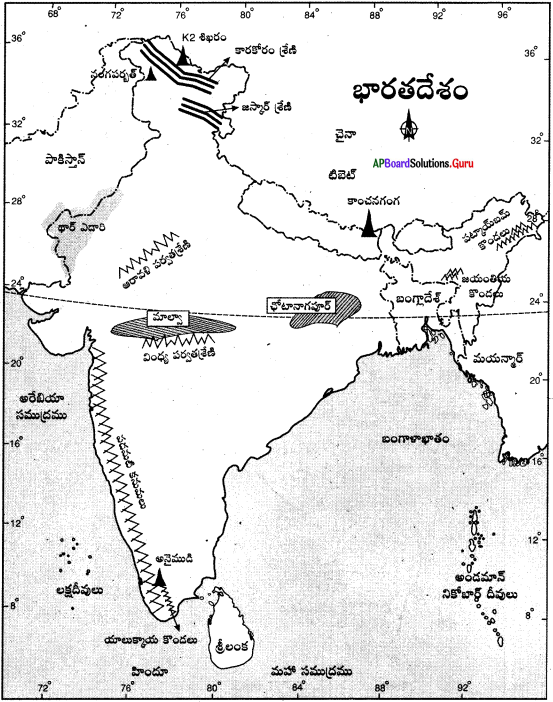
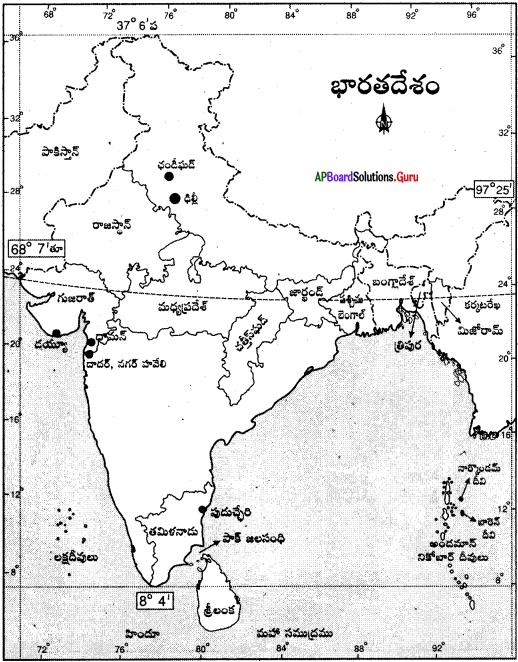

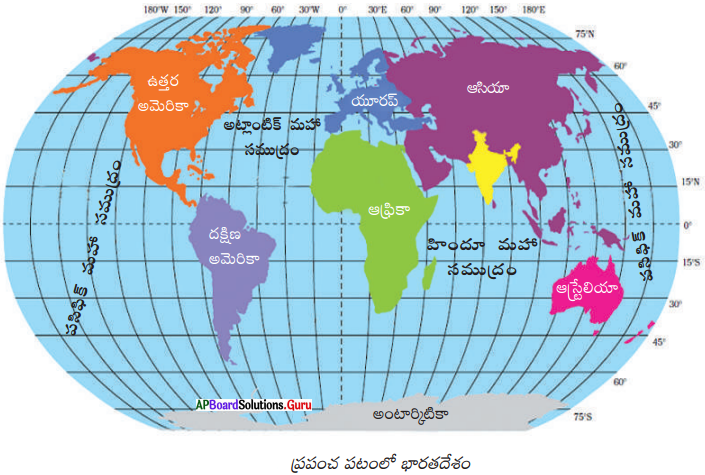

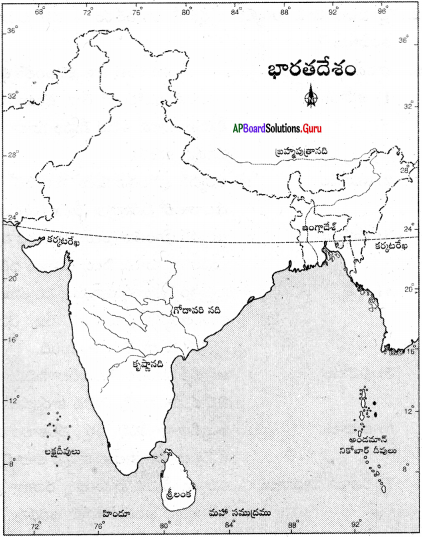
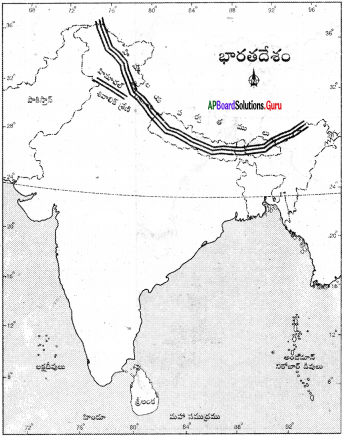
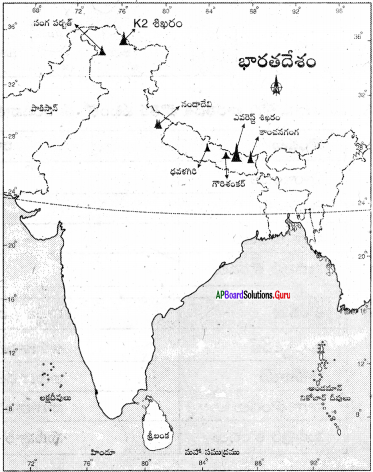

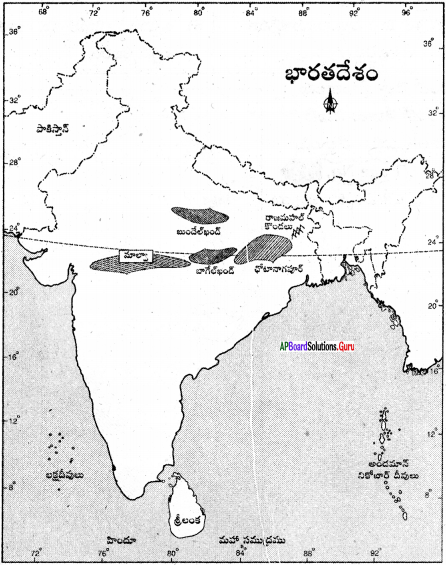
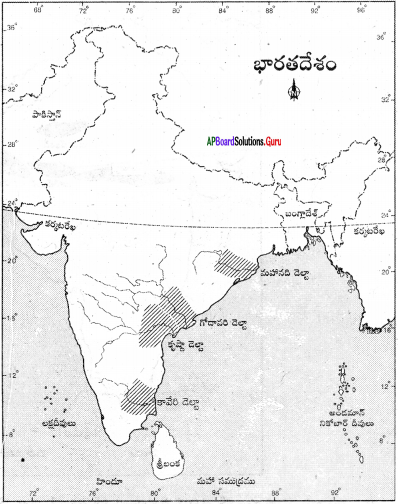
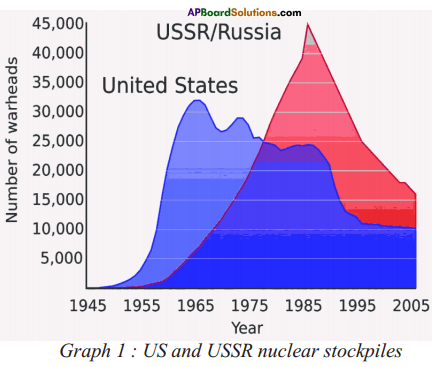 a) During 1955-2005, which country had the highest number of warheads?
a) During 1955-2005, which country had the highest number of warheads?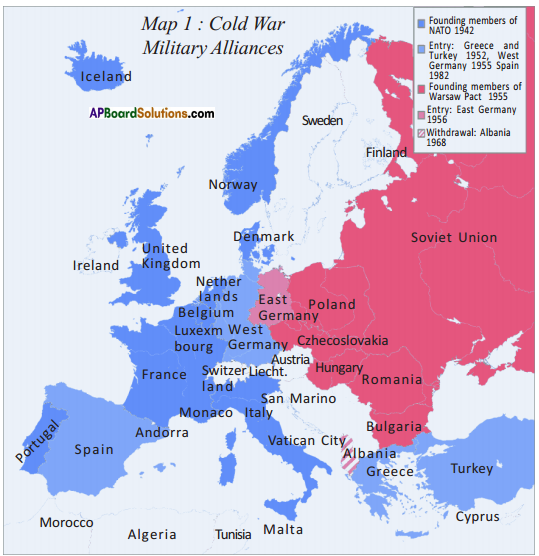
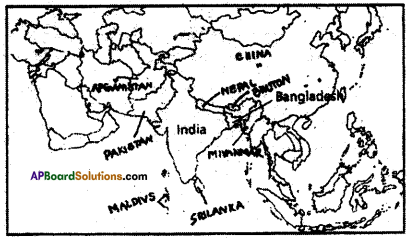 A) Write any two countries which are sharing boundary with India on the North-eastern side.
A) Write any two countries which are sharing boundary with India on the North-eastern side.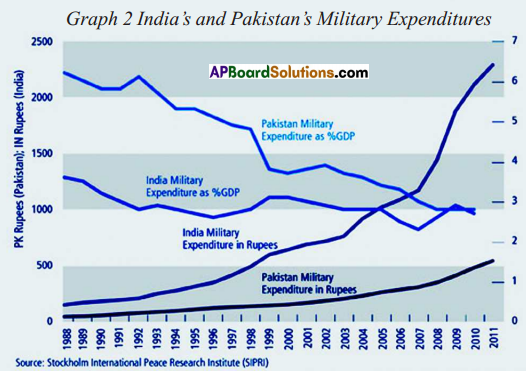 1. Which country had spent more on Military Expenditure in its GDP?
1. Which country had spent more on Military Expenditure in its GDP?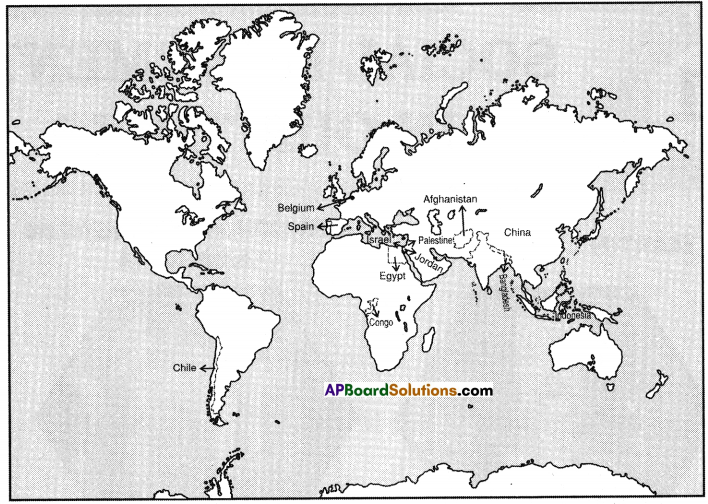
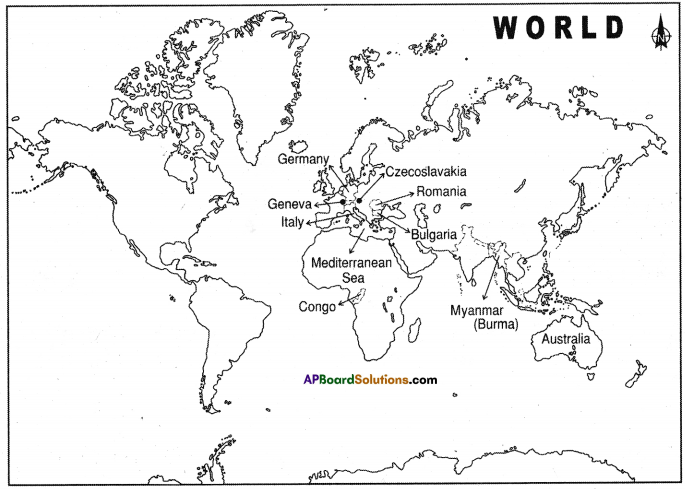

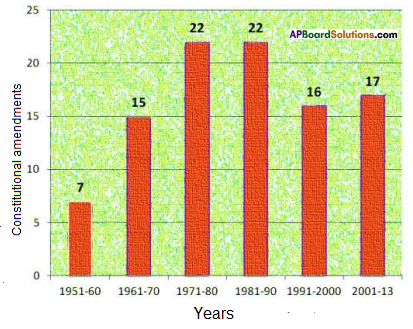
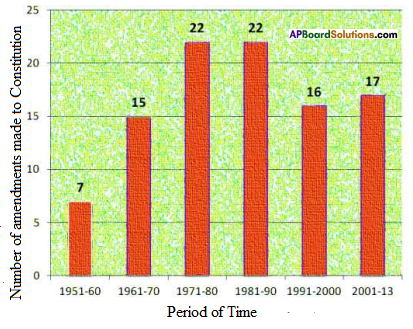
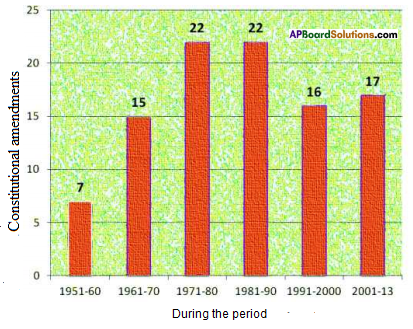 Now answer the following questions.
Now answer the following questions.
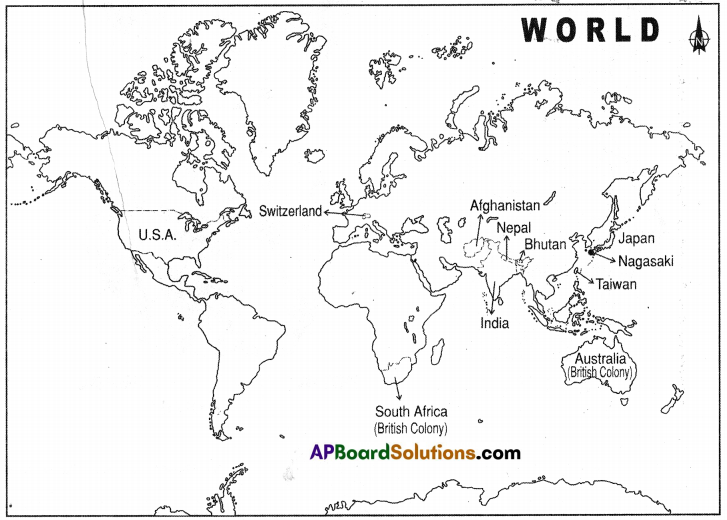
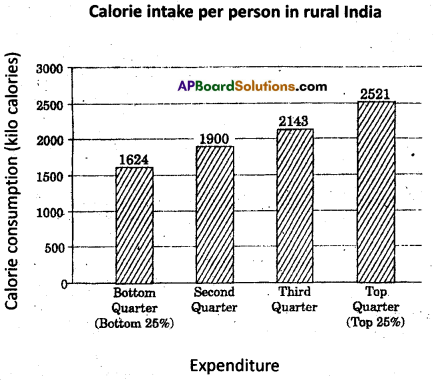 a) What percentage of people in rural India are consuming more calories than are required?
a) What percentage of people in rural India are consuming more calories than are required?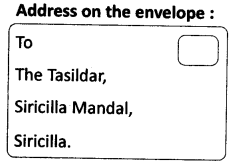
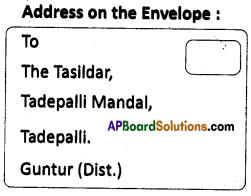
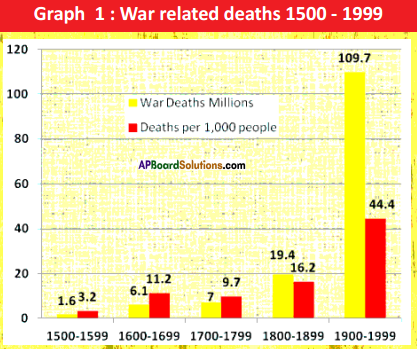
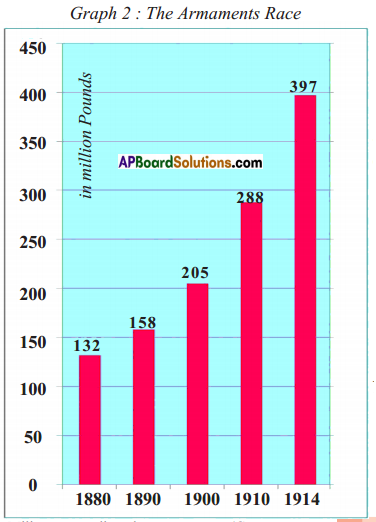
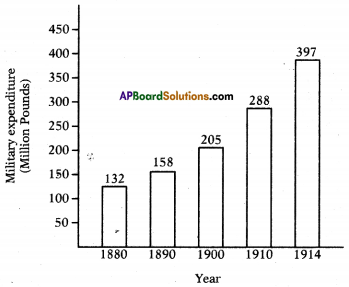
 a) Name two countries that did not fall under the German Empire.
a) Name two countries that did not fall under the German Empire.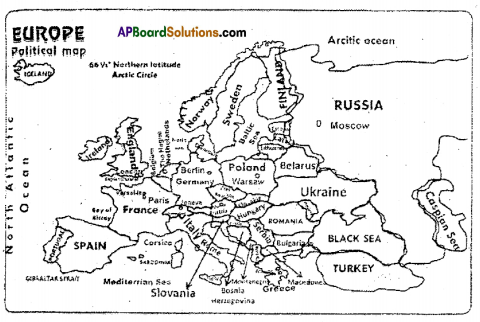 List out the Axis Power group and Central Allies group.
List out the Axis Power group and Central Allies group.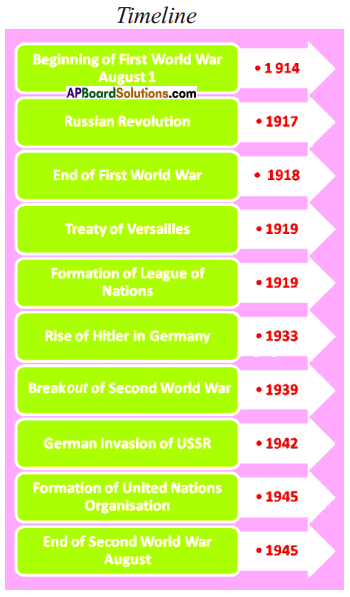 a) What was the immediate cause of World War-ll?
a) What was the immediate cause of World War-ll?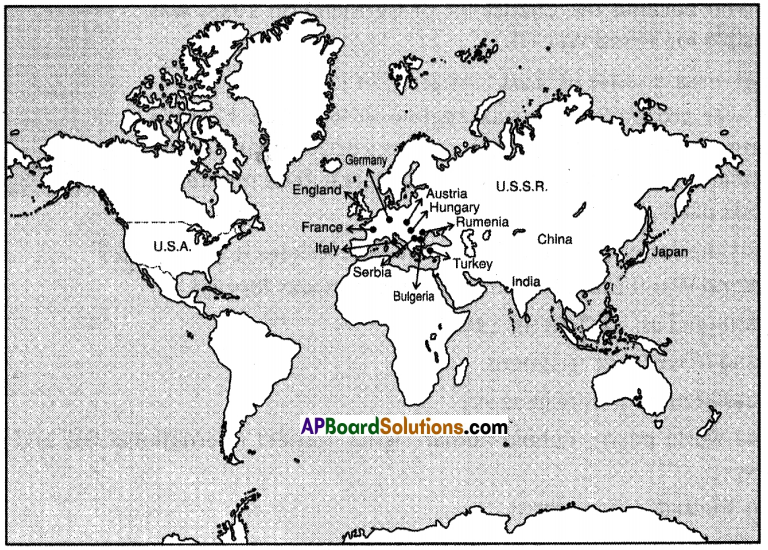
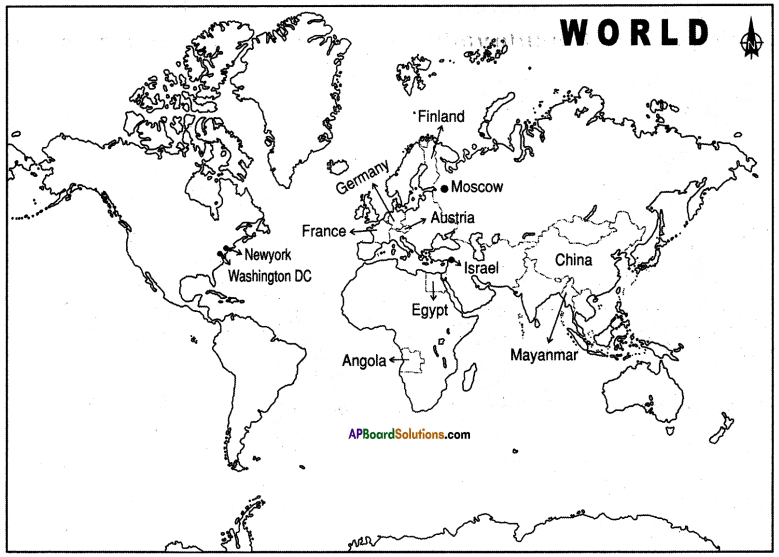
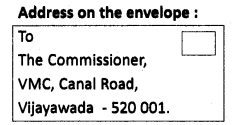
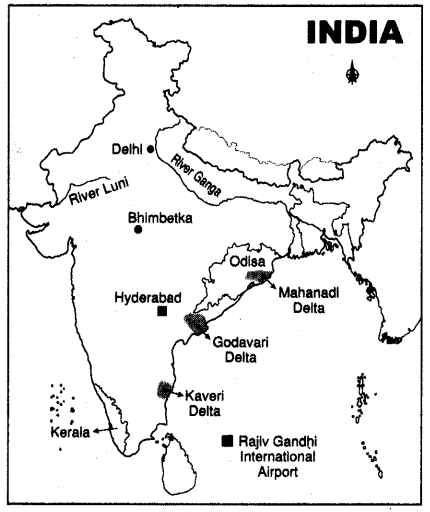
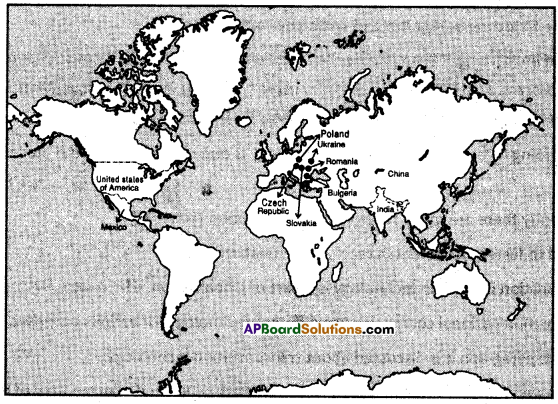
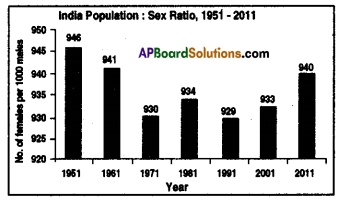
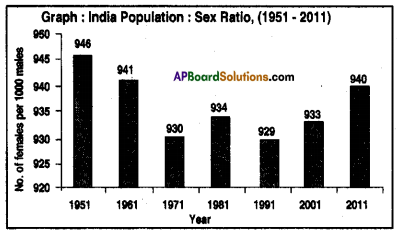 a) In which year, the highest sex-ratio was recorded?
a) In which year, the highest sex-ratio was recorded?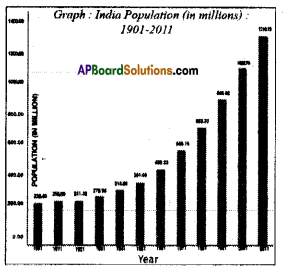 Answer:
Answer: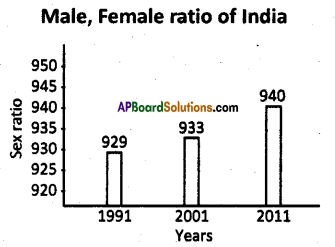 Answer:
Answer: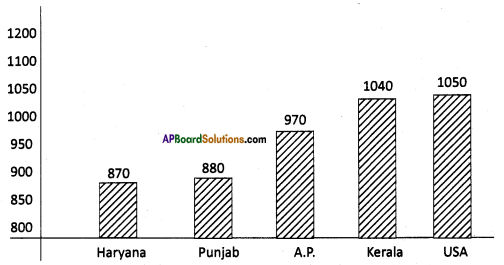

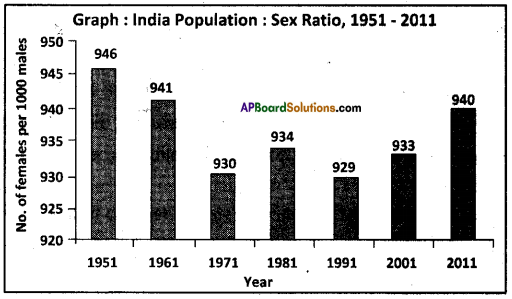
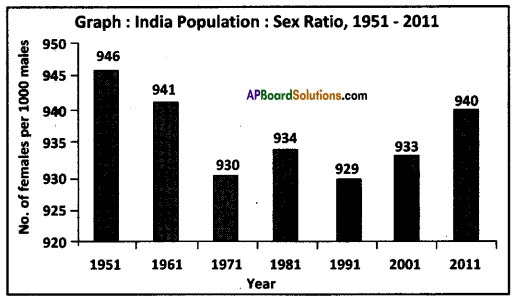
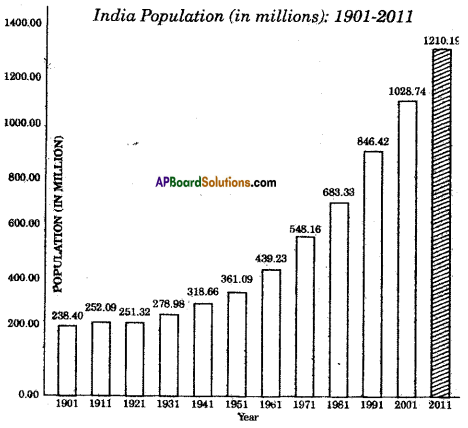
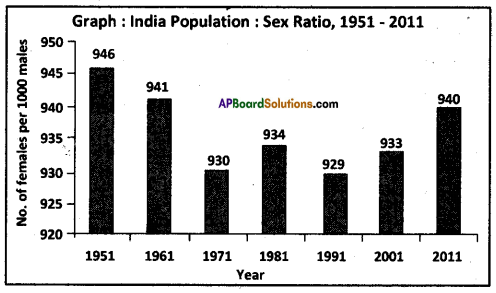 Now answer the following questions.
Now answer the following questions. a) What are group in India has the largest percentage of people?
a) What are group in India has the largest percentage of people? Now answer the following questions.
Now answer the following questions.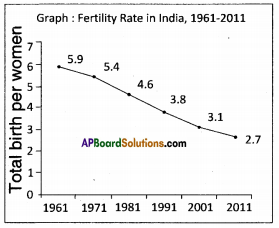 Answer:
Answer: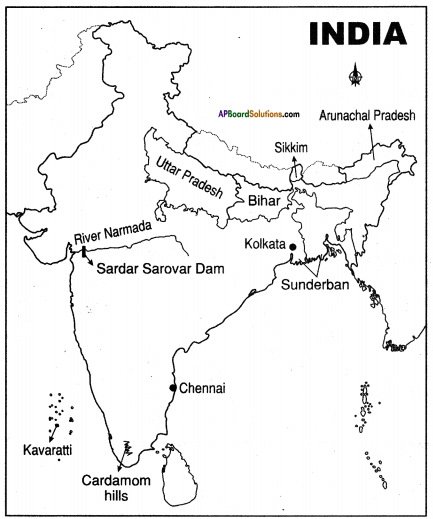
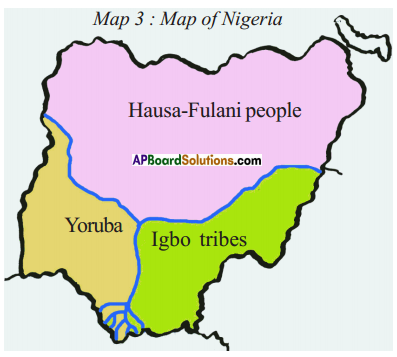 How were the British able to implement their ‘divide and rule’ policy in Nigeria?
How were the British able to implement their ‘divide and rule’ policy in Nigeria?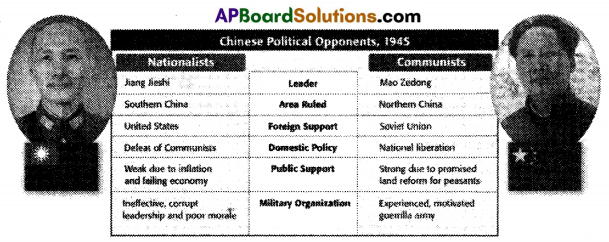 Which aspect of the Communist approach do you think led to Mao’s victory? Explain.
Which aspect of the Communist approach do you think led to Mao’s victory? Explain. a) Which nation was ruled by the Manchu Dynasty?
a) Which nation was ruled by the Manchu Dynasty?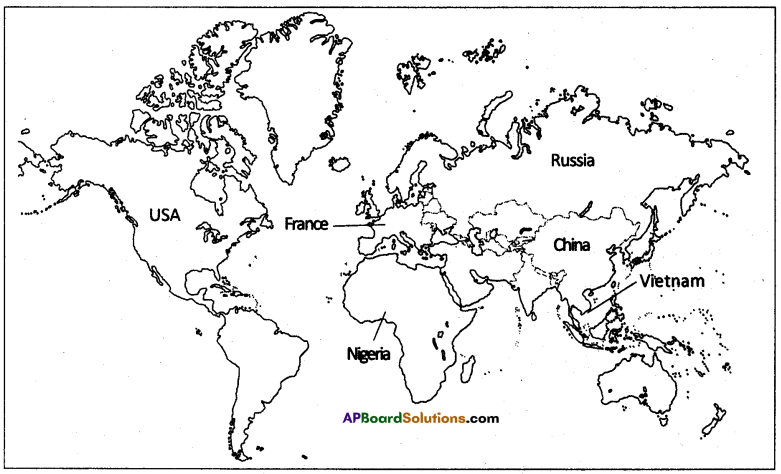
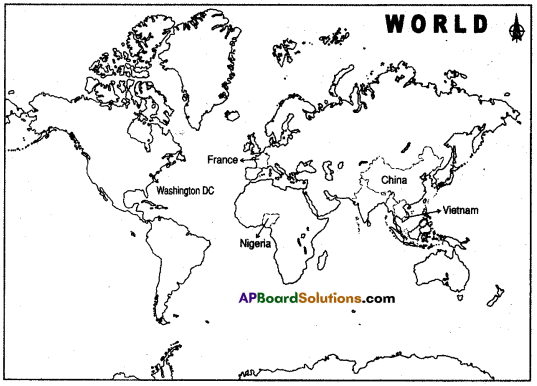
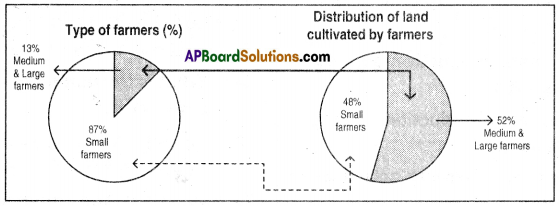



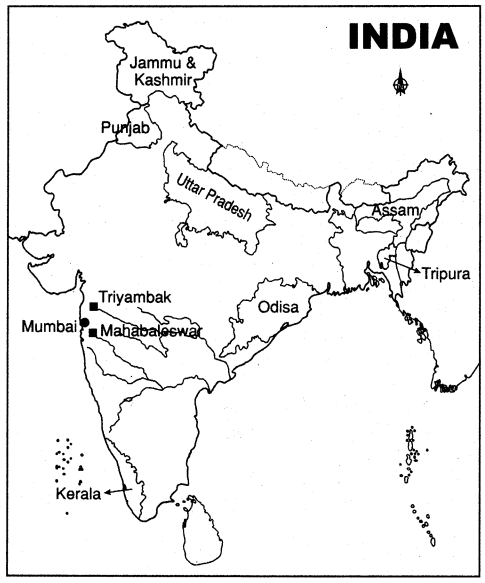
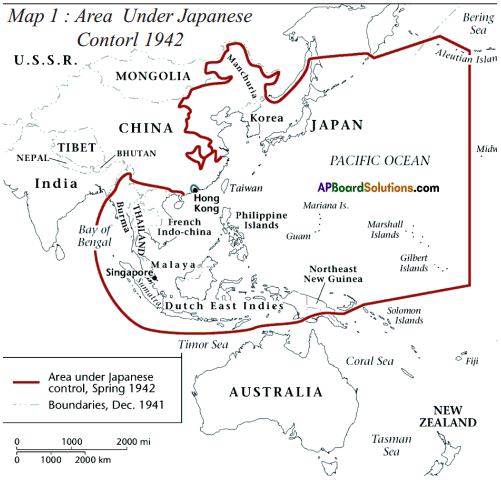 Name any one country that shared land boundary with India and not under the control of Japan.
Name any one country that shared land boundary with India and not under the control of Japan.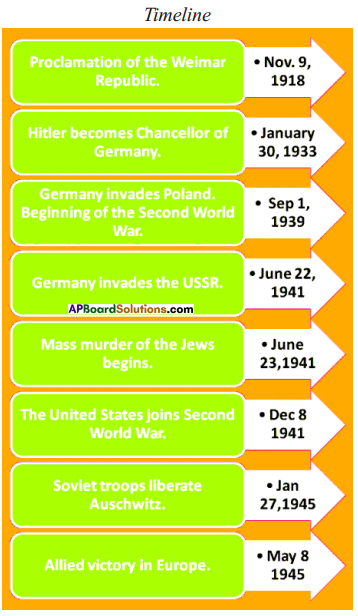
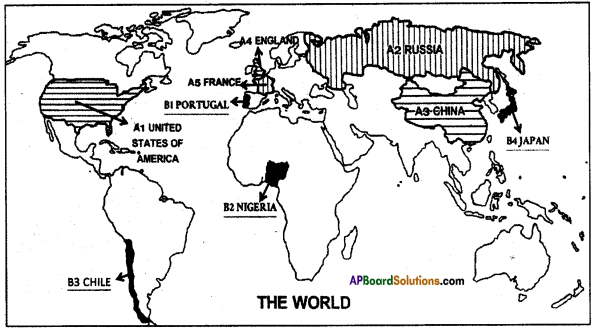 Question 3.
Question 3.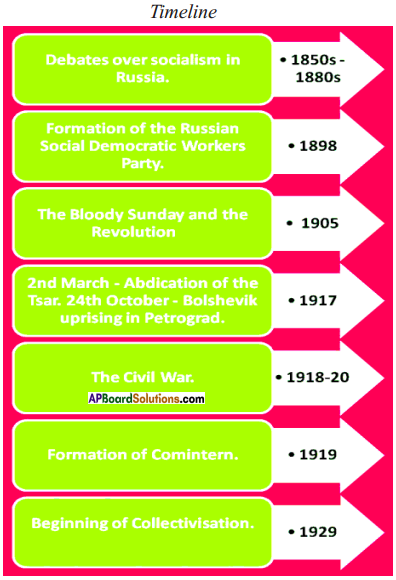

 Answer:
Answer: